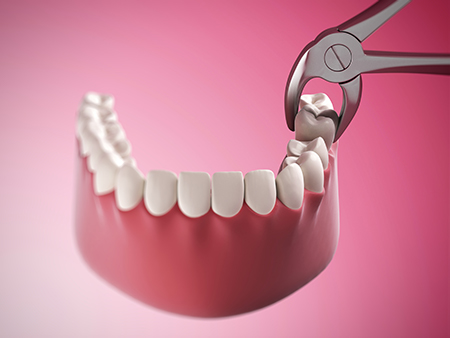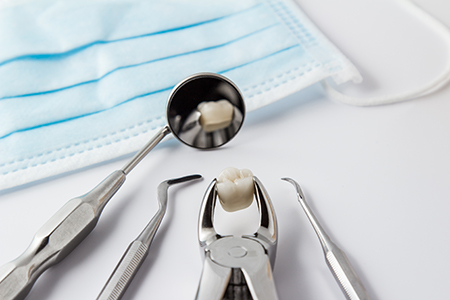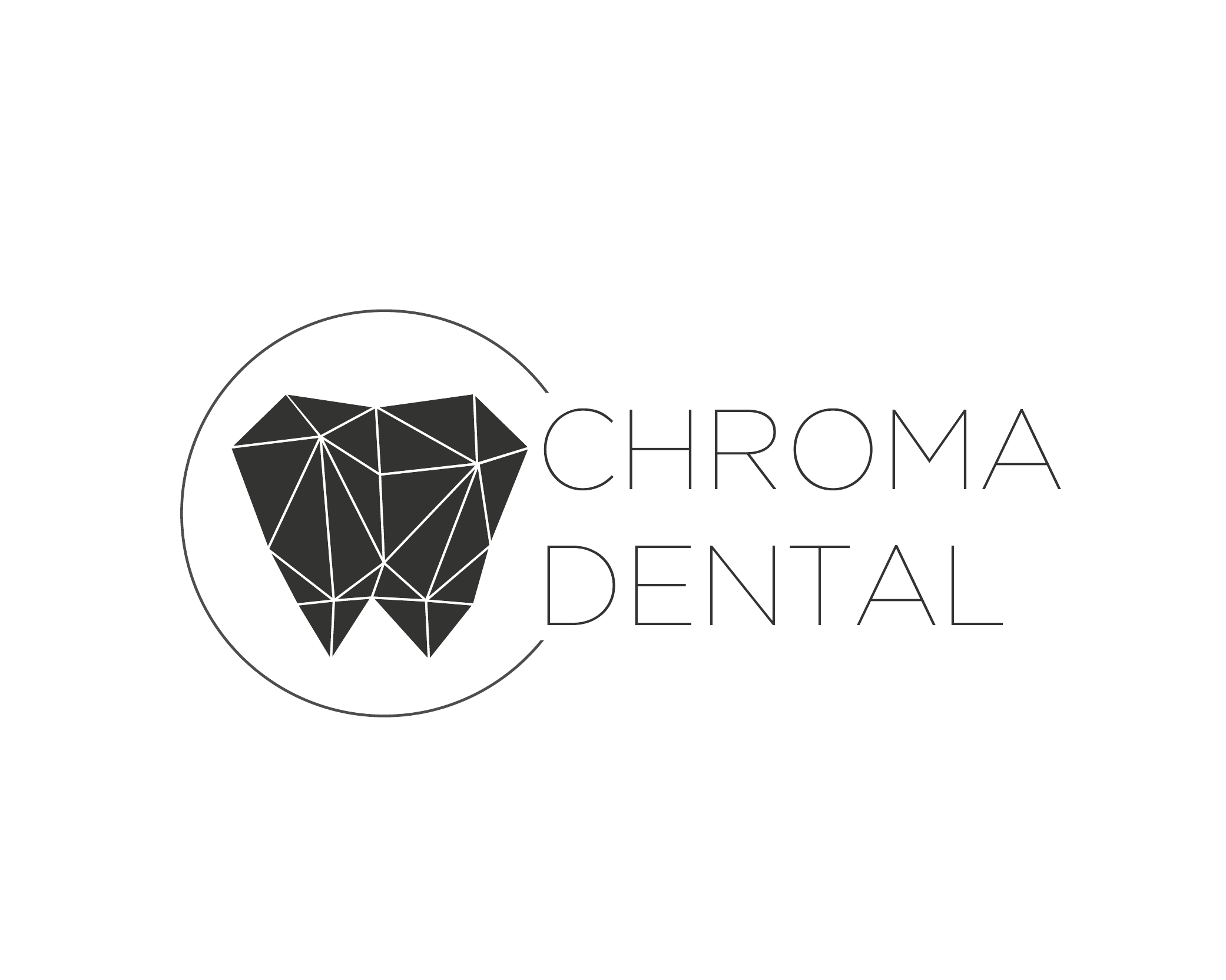Removing a tooth is never the first choice — preserving natural teeth is the goal. Still, there are clear situations where extraction protects oral health, prevents complications, and creates a better foundation for future care. Our approach is to assess every case carefully, explain the reasons clearly, and recommend extraction only when it is the most responsible option for the patient’s long-term well‑being.
We begin with a thorough review of your dental and medical history and use modern imaging to understand the tooth’s condition and its relationship to surrounding structures. That careful evaluation helps us determine whether conservative treatment is possible or whether extraction will avoid repeated procedures and ongoing infection. Transparency and patient education are central to this process — we make sure you understand the rationale and the alternatives before moving forward.
When extraction is recommended, the focus shifts to minimizing discomfort, preserving surrounding tissues, and planning for the tooth’s eventual replacement if needed. Early planning ensures the best aesthetic and functional results, whether the next step is a removable prosthesis, a fixed bridge, or an implant-supported restoration. Throughout, the care team emphasizes safety, comfort, and predictable outcomes.
Retained primary (baby) teeth that interfere with normal development
Some baby teeth fail to loosen on schedule or have roots that don’t resorb properly. When a primary tooth remains firmly attached, it can block the eruption of the permanent tooth or cause alignment problems. In those situations, carefully timed removal can guide proper growth and reduce the need for more invasive orthodontic care later on.
Permanents with severe decay that cannot be restored
Dental decay progresses from the enamel inward, and when structural damage compromises the tooth beyond repair, extraction may be the safest option. Removing a non-restorable tooth prevents the spread of infection to adjacent teeth and tissues and helps protect overall oral health.
Teeth that are badly fractured or compromised
Cracks and fractures occur in many forms. When a break extends below the gumline or involves the root in a way that destroys critical tooth structure, retaining the tooth may not be feasible. Extraction removes a potential source of pain and infection and allows for predictable restorative planning afterward.
Advanced periodontal disease that undermines support
Chronic gum disease can erode gum tissue and the bone that holds teeth in place. When support is lost to the point that a tooth is painful, mobile, or a persistent infection source, extraction is often necessary to control disease and protect the health of surrounding teeth.
Problematic wisdom teeth (third molars)
Wisdom teeth frequently lack the space to erupt normally. They can become impacted, cause crowding, develop decay, or create pressure on neighboring teeth. We evaluate development patterns and recommend extraction when the risk to oral health outweighs retaining these late‑erupting teeth.
Extractions as part of orthodontic treatment
When the jaws are too small to accommodate all permanent teeth, the strategic removal of one or more teeth can be part of an effective orthodontic plan. In those cases, extractions are coordinated with the orthodontist to achieve an aligned, functional, and esthetic bite.

Before any procedure, we complete a comprehensive assessment to determine the safest, most efficient way to proceed. This includes a review of your medical history, current medications, and any conditions that could affect healing. Knowing your overall health helps us decide whether additional precautions — such as coordinating with your physician or adjusting medications — are necessary.
High-quality imaging, including digital radiographs when indicated, is used to understand root anatomy, proximity to nerves and sinuses, and the presence of infection. That information guides the treatment plan and helps us choose between a simple removal and a more involved surgical approach. We explain the findings and your options so you can make an informed decision.
Comfort and anxiety management are important to many patients. We offer local anesthesia and can discuss sedation options when appropriate to ensure your experience is calm and pain-free. Our team will review pre‑procedural instructions, including fasting guidance and medication adjustments, and answer any questions so you know what to expect on the day of treatment.
A simple extraction applies when the tooth is fully visible and the roots are relatively straightforward. After numbing the area thoroughly with local anesthetic, the dentist gently loosens the tooth and removes it with forceps. The technique is designed to preserve surrounding bone and soft tissue to allow for faster healing and better options for replacement later, if needed.
Most patients tolerate simple extractions well and are able to return to normal activities within a short period. We provide clear post‑operative instructions and pain control strategies to keep recovery comfortable. If you have dental anxiety, be sure to discuss sedation possibilities during your consultation so we can tailor the approach to your needs.
Surgical extractions are indicated when a tooth is impacted, broken at the gumline, fused to the bone, or has an unusual root configuration. These procedures may involve a small incision in the gum and careful removal of a bit of bone to access and extract the tooth. Precise technique helps protect adjacent teeth and vital structures.
In some cases we may coordinate care with an oral and maxillofacial surgeon for highly complex situations. Regardless of where the procedure takes place, our priority is the same: thorough planning, controlled technique, and attentive follow-up to promote safe healing and predictable results.

Healing begins immediately after the extraction and is supported by simple, practical steps you can follow at home. We tailor post‑operative instructions to each patient, but there are consistent principles that speed recovery and reduce complications: protect the clot, manage swelling, follow medication guidance, and maintain gentle oral hygiene. Understanding what to do — and what to avoid — helps ensure smooth healing.
We provide written post‑op directions and review them with you before you leave the office. Keeping scheduled follow‑up appointments allows us to monitor healing, remove sutures if used, and plan for tooth replacement when appropriate. If you have a medical condition or take medications that affect clotting or healing, we coordinate care with your physician to keep you safe.
Control bleeding with firm pressure
We place gauze over the extraction site to help a stable blood clot form. Bite down gently but firmly and replace the gauze as directed. A small amount of oozing for the first 24 hours is normal; persistent heavy bleeding should prompt a call to the office.
Protect soft tissues while numb
Until the local anesthetic fully wears off, avoid chewing, touching, or sucking on the numb area to prevent accidental injury to lips, cheeks, or tongue.
Take medications as instructed
Follow the prescribed medication schedule for antibiotics and pain control. If you are given antibiotics, complete the full course. For pain, taking an analgesic before numbness fades can reduce early discomfort; always follow dosing guidance.
Antibiotics:
Take the full prescription exactly as directed if an infection risk is present.
Pain medication:
Use over‑the‑counter or prescribed pain relievers according to your provider’s instructions. Avoid aspirin unless advised, as it may increase bleeding.
Protect the clot
Avoid rinsing vigorously, using straws, or smoking for several days. These actions can dislodge the clot and lead to delayed healing or a painful condition known as dry socket.
Manage swelling
Apply an ice pack in short intervals during the first 24 hours to minimize swelling. After that period, warm compresses can help with comfort if needed.
Diet and hydration
Stick to cool, soft foods and avoid hot, spicy, or carbonated drinks for the first day or two. Keep well hydrated, but sip gently to protect the extraction site.
Oral hygiene
Continue gentle brushing away from the extraction area and use a mild saltwater rinse after the first 24 hours to keep the mouth clean. Avoid forceful rinsing or spitting initially to protect the healing clot.
Follow-up visits
If sutures were placed or if healing requires monitoring, keep your scheduled follow-up appointment. Timely follow-up allows us to address concerns early and plan any needed restorative work.
If you notice worsening pain, increased swelling after a few days, persistent fever, or other unusual symptoms, contact us promptly so we can evaluate and manage the situation.

Removing a tooth can be a starting point for restoring comfort and function. After extraction, we discuss appropriate replacement options based on your goals, oral health, and the condition of the surrounding bone. Choices commonly include removable dentures, fixed dental bridges, and implant-supported restorations — each has distinct advantages depending on the situation.
Dental implants are often recommended when preserving jawbone and achieving the most natural long‑term function are priorities. Fixed bridges can be an efficient solution when neighboring teeth are healthy and suitable for crowns. Removable options remain valuable for certain patients and can be designed to be both comfortable and stable. We review each approach with you and develop a personalized plan that balances durability, appearance, and oral health.
Your post‑extraction care also involves protecting neighboring teeth and managing risk factors such as gum disease and bruxism (tooth grinding). Preventive care, routine maintenance, and early intervention are the best ways to preserve the rest of your smile over the years.
At Chroma Dental, our care philosophy centers on clear communication, careful planning, and gentle technique. The team combines clinical experience with modern imaging and anesthesia options to deliver treatment that is safe, predictable, and focused on your comfort. We prioritize minimally invasive approaches when possible and coordinate specialty care when a situation calls for advanced surgical expertise.
When replacement is part of the plan, we guide patients through evidence‑based options so they can choose a solution that fits their lifestyle and long‑term goals. Whether you need a straightforward extraction or a more complex surgical approach, our goal is to provide care that protects your health and restores function with minimal disruption to your life.
If you have questions about extractions, the recovery process, or replacement choices, please contact us for more information. Our team is available to explain options, address concerns, and help you make a confident, informed decision about your care.
The most common reasons for tooth loss include advanced periodontal disease, extensive tooth decay, and facial trauma. According to statistics, gum disease is responsible for close to 70% of tooth loss in adults. Although less frequent than the preceding three reasons, it should also be noted that specific diseases, drugs, smoking, and poor nutrition contribute to the risk of tooth loss.
The Centers for Disease Control and Prevention report that in the United States, an average of 12 teeth (including the wisdom teeth) are lost by the age of 50. Also, 26% of adults between 65 and 74 years of age have lost all their teeth.
Every patient and every situation is different. However, when a tooth and the surrounding tissues are numbed with a local anesthetic, you should only expect to feel a bit of pressure, but no pain as the tooth is being loosened from the surrounding tissues and extracted. For patients who are apprehensive and for some surgical extractions, our office will discuss our options in dental sedation to provide further relaxation and reduce any sense of discomfort.
While it's normal to feel some tenderness and swelling following an extraction, the degree of these sensations can vary. It mostly depends on the complexity of the extraction and the body's response to the procedure. We'll recommend or prescribe the appropriate pain medication to help ensure your comfort and give you specific instructions for maximum effectiveness and safety.
Typically, the recovery period following a simple extraction is shorter than a surgical extraction. However, a patient's overall health, habits, the size and location of the tooth, and other variables can influence recovery and healing. To speed up the recovery and avoid any complications, patients must follow the given at-home instructions diligently. We'll carefully review what to expect following your procedure and go over your post-op instructions.
Smoking interferes with blood clot formation, which is an essential first step in the healing process. Blood clot formation not only provides a protective layer to cover the underlying exposed bone and nerve endings, but it also supports the growth of new tissue. Cigarette smoke also contains chemical toxins that can disrupt the healing process and lead to problems such as continued inflammation, infection, or dry socket.
In a very small percentage of cases, a condition known as dry socket can develop in the aftermath of a dental extraction. This painful condition can arise when the blood clot in the extraction site doesn't form properly or gets dislodged. With dry socket, you may experience throbbing pain and symptoms such as bad breath and an unpleasant taste in your mouth. As skilled providers of care, our office will provide immediate treatment to alleviate your discomfort and promote healing.
The last teeth in your mouth to develop, wisdom teeth often do not have enough room to fully erupt or may be positioned in the wrong direction. These issues can affect your dental health as well as overall wellbeing. While some individuals never develop all their wisdom teeth, and a few have sufficient space for them, there are many people with partially or fully impacted third molars. Our office will monitor the development, position, and health of your wisdom teeth and will advise you if and when extractions are indicated.
After a tooth is removed, bone-grafting material is sometimes placed in the socket to promote healing and encourage new bone development. This procedure is often performed to support the eventual and successful placement of a dental implant.
At the office of Chroma Dental, we strive to make dental care affordable and accessible. Depending on the type or complexity of the extraction and other variables, the cost of the procedure can vary. Based on our diagnostic findings, our office will inform you of the healthiest choices in care, explain the fees, discuss insurance coverage, and explain your payment options.
Many dental plans offer some level of coverage for tooth extractions. We'll advise you if your plan covers the full cost of the procedure and if there is any out-of-pocket expense. Our business office will work with you to maximize your insurance benefits as much as possible while helping you minimize any out-of-pocket expenses.
